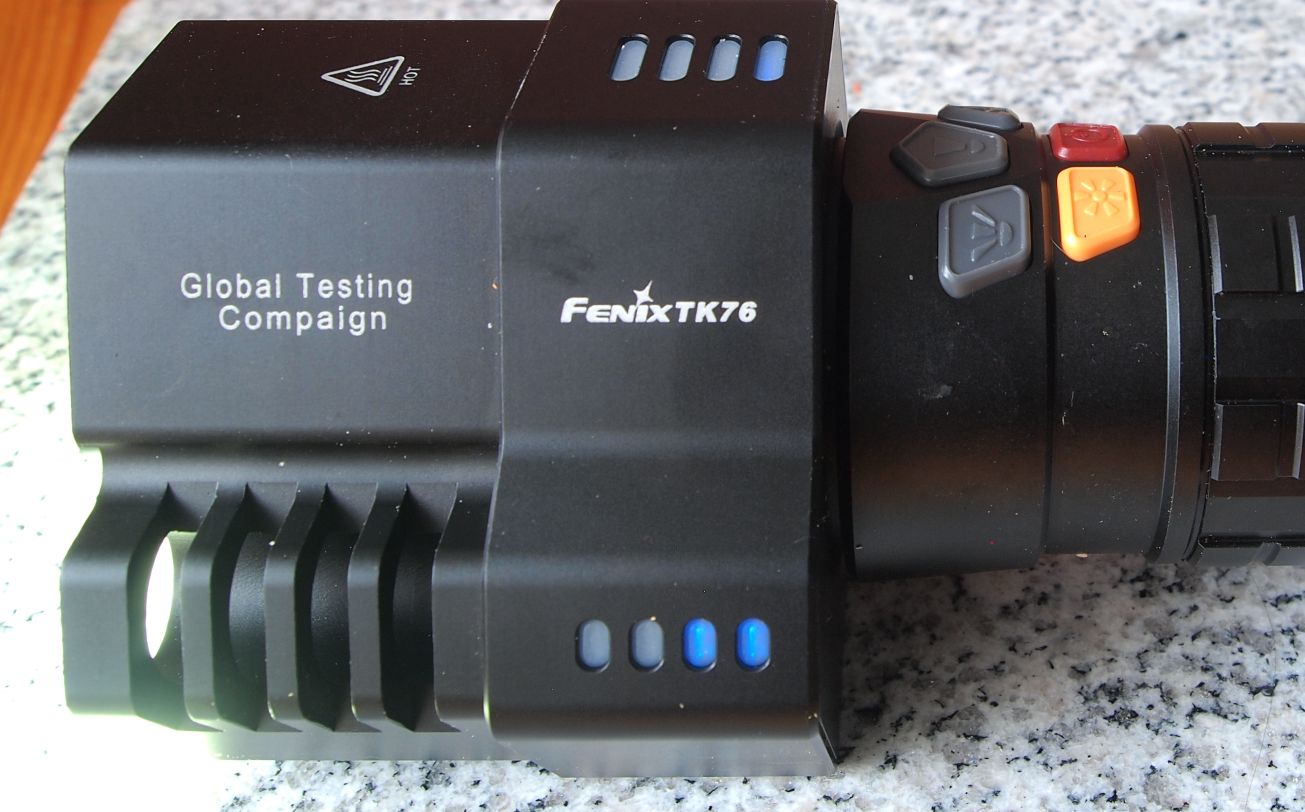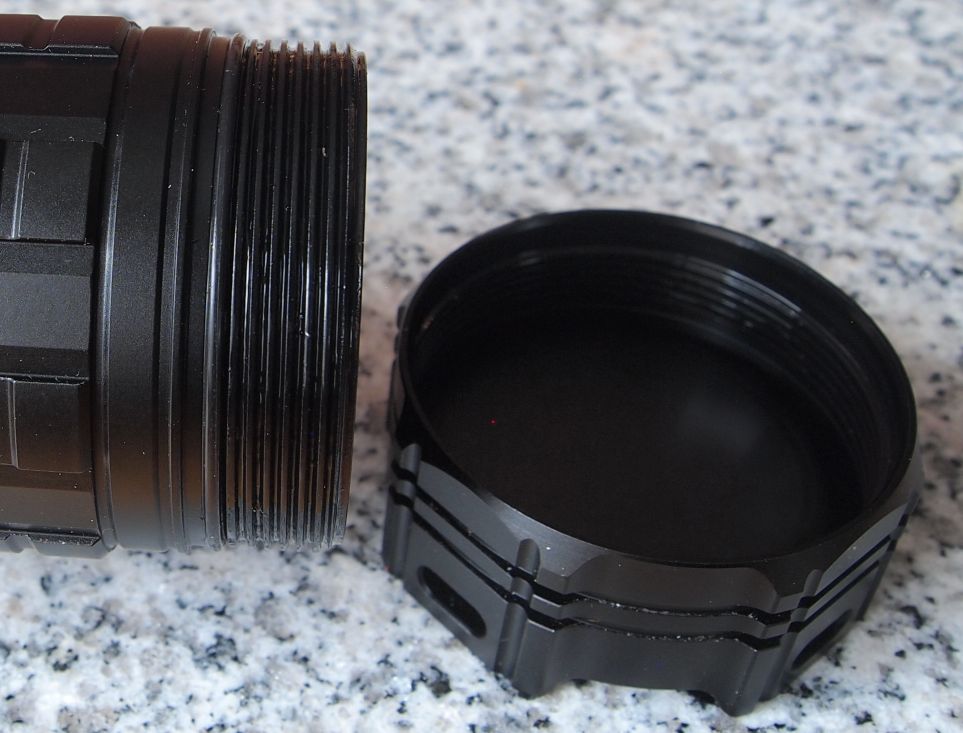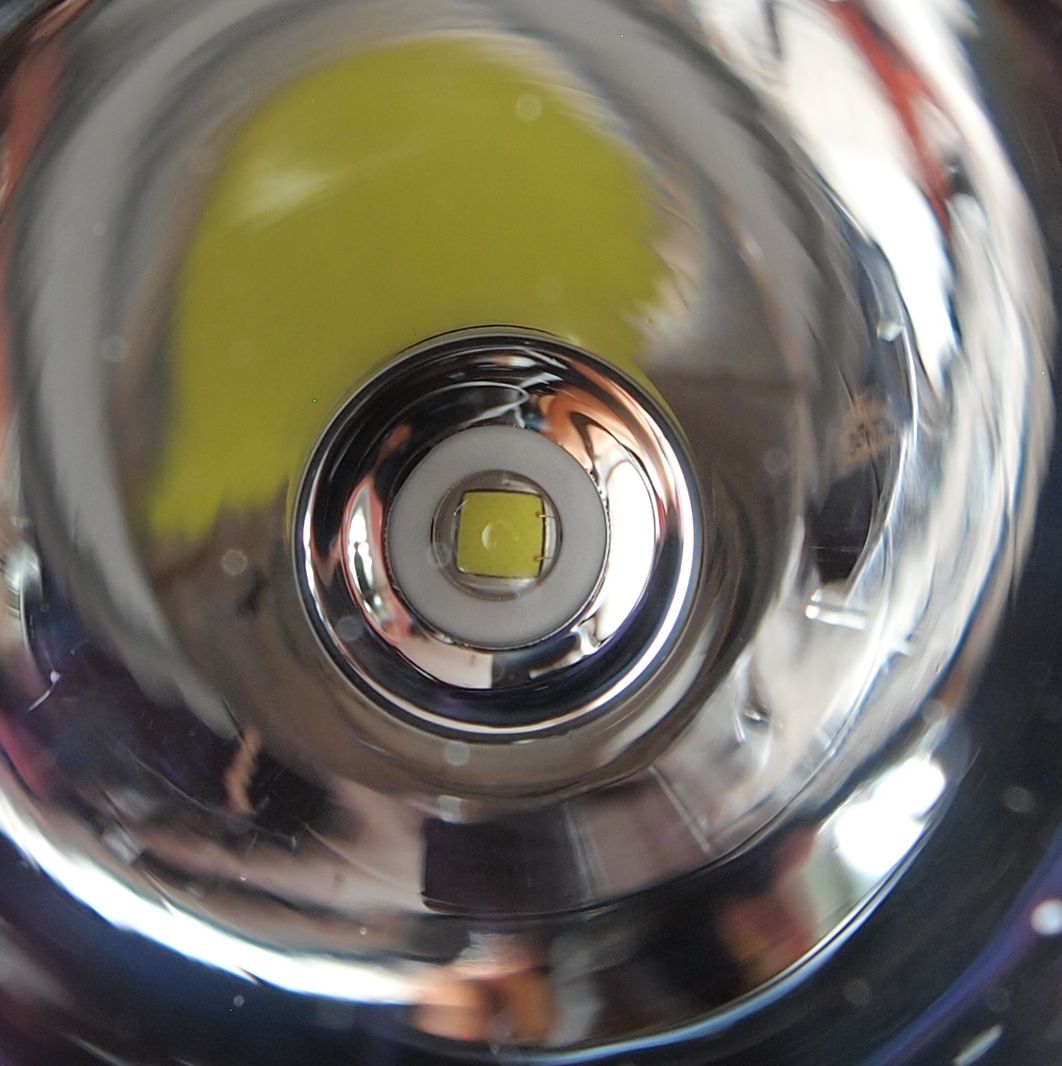TK76-Discussion:
The light was left 'as is' and not wiped down after using it on purpose. Thus you can see the black surface can be a bit of a dust and fingerprint magnet. (Click on any picture to view in full size).
Switches:
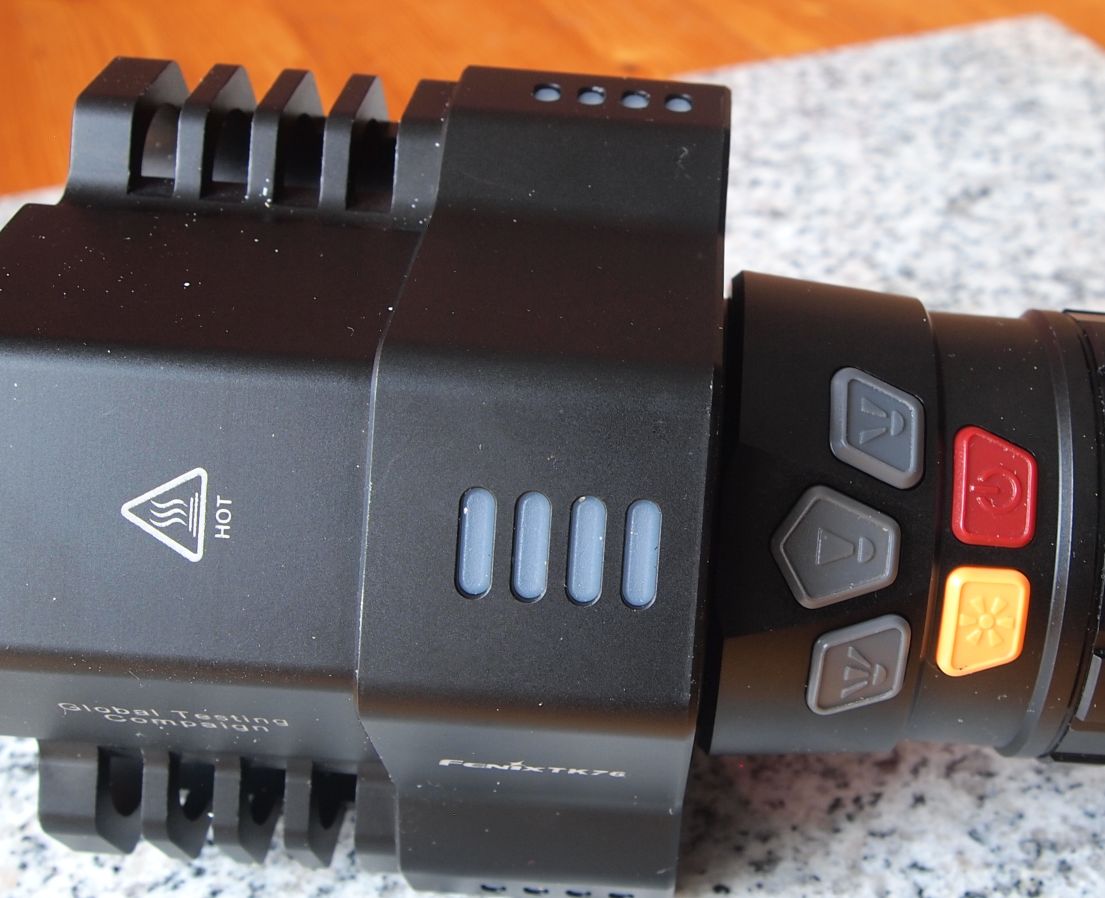
The switch layout is intuitive and spaced properly for use with gloved hands. The red is the power on/off. The yellow activates the light instantly into turbo mode. The three switches above are the levels adjusters for the three respective LED's. The status bars respond to the level of each LED in 4 increments. The switch feedback seems decisive with good tactile responsiveness.
Optics:

The 17mm optics consist of one XM-L2 T6 beaded flood (on the right of picture) which appears to spread the light as much as 130 degrees (but most of it is concentrated into a 45 degree spot), and a clear optic for the U2 that appears to have an even well distributed 60 degree spread.
Reflector:
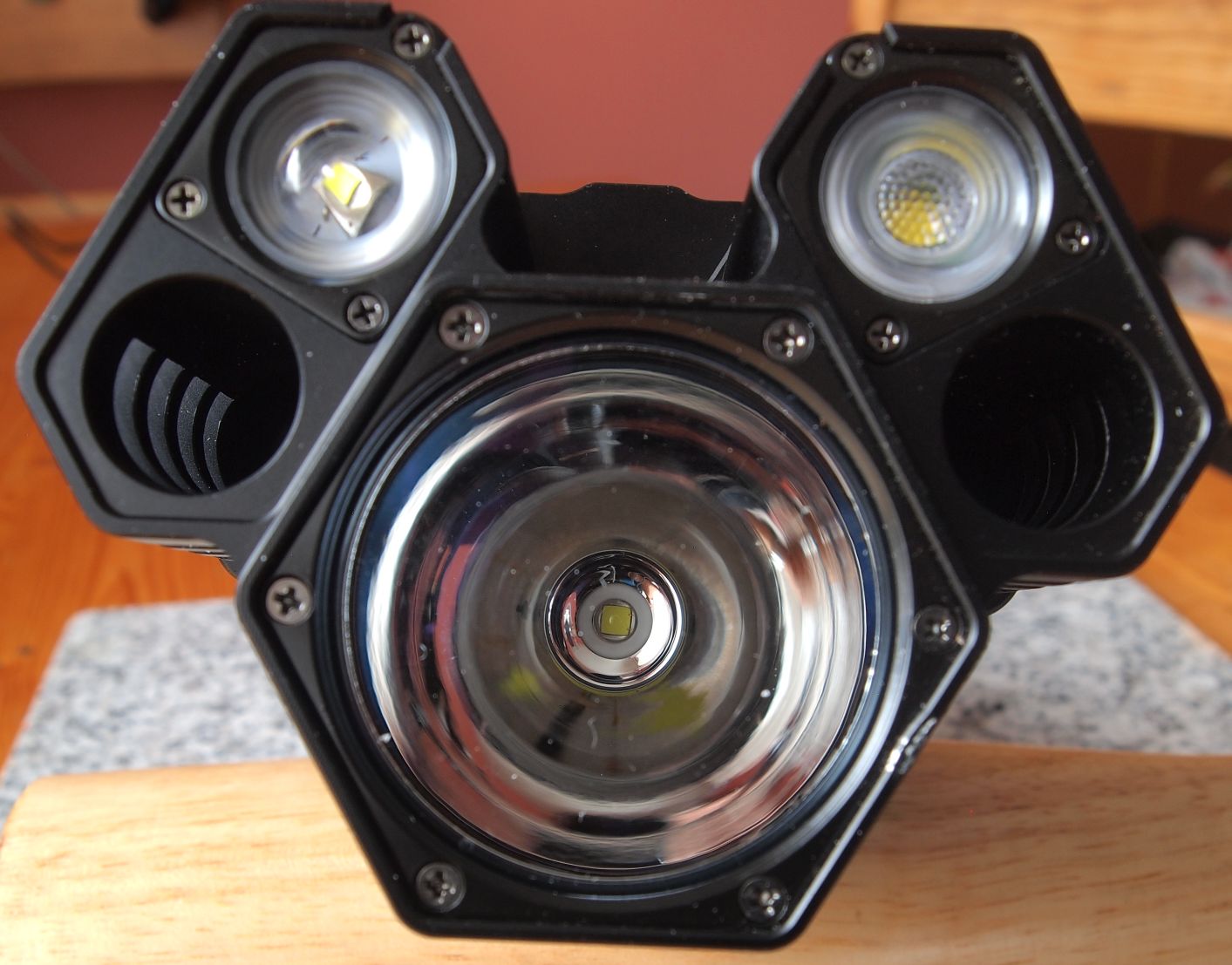
The XM-L2 U2 emitter in the main head is rated to give 933 Lumens for 3.5 hours on Turbo mode (Fenix does not stipulate if testing was done with their 2900mAh or newer 3400mAh batteries). I measured the beam at 38 degrees off the X axis from the 43mm SMO reflector.
Balance:
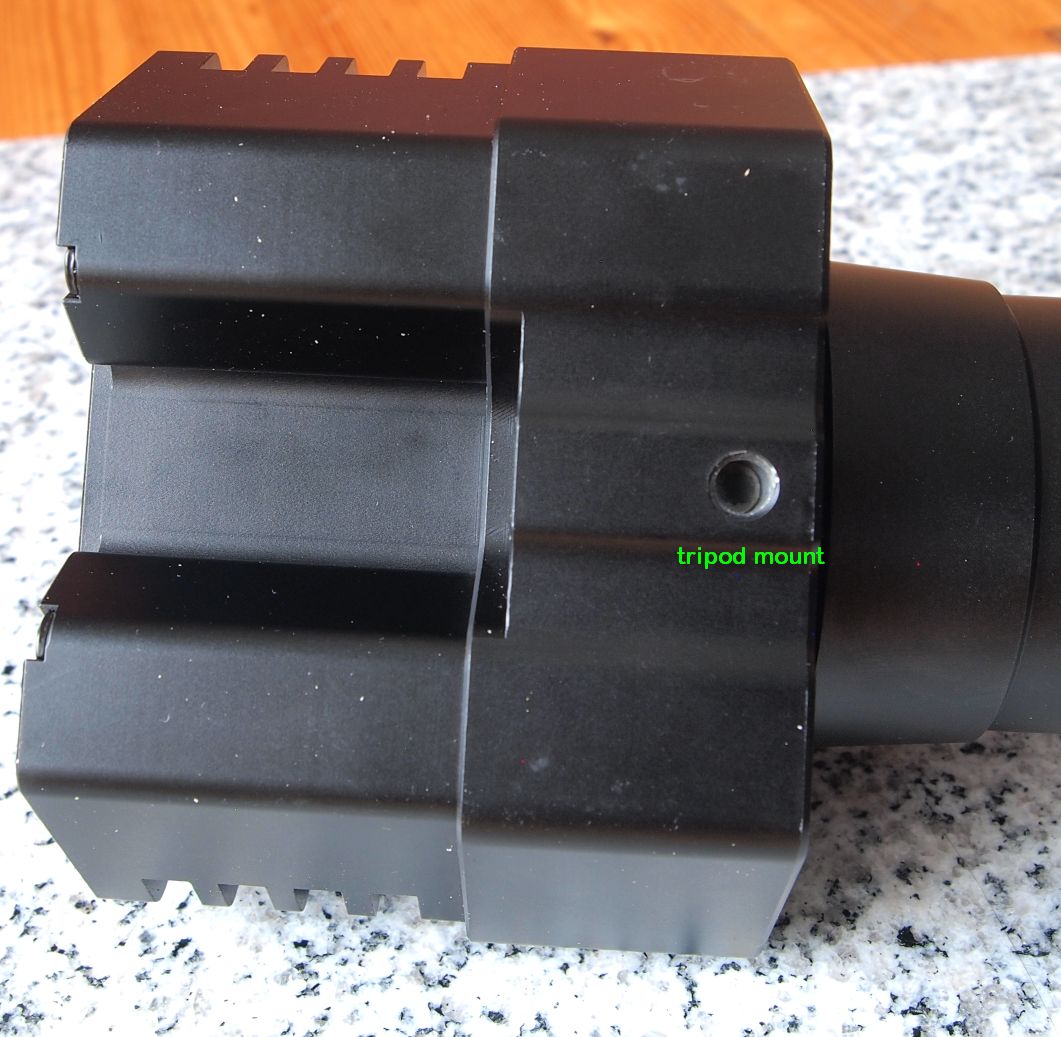
Of the total weight of 975 grams (with batteries), about 375 of that is behind the tripod mount point. However, because the handle is twice as long as the head, the balance point finds the fulcrum at a point between the two sets of switches. This results in a good balance for hand carrying in the field. For tripod mounting a good sturdy tripod will work, you will not be able to mount this with the ubiquitous but rather anemic Gorillapods or their popular clones.
Battery Carrier:
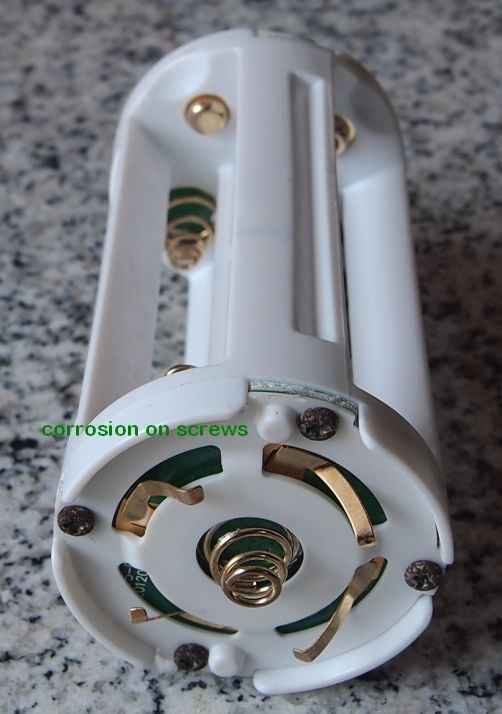
Battery placement is straightforward, negative end of your battery goes to the springs. The carrier holds protected and unprotected cells nice and snug with no insertion problems for either type. During the half dozen times I had armed and discharged the carrier, I did not notice the corrosion on the screws until I was cropping the picture above. So I ran back and unloaded the carrier, and sure enough, my eyes were not deceiving me. The tail end of the carrier has the same problem. This would seem to be a simple, but embarrassing oversight on the part of Fenix that they will obviously be addressing.
Flashlight manufacturers are either using plastic or metal to build these carriers. The plastic used for this one seems to be made in a sturdy fashion and should hold up to the 1m impact stress threshold established by Fenix for this model.

